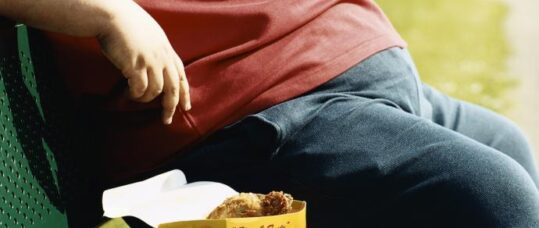Dysphagia and swallowing disorders

– Dysphagia can result in morbidity, increase mortality risk, increase the costs of care and reduce quality of life
– Management of dysphagia should be delivered by a multidisciplinary team and protocols and training should be followed
– Treatment of dysphagia is important and will reduce the threats of choking and aspiration of food
Deglutition disorders (dysphagia) are a major concern affecting patients’ safety, wellbeing and quality of life. Dysphagia has been recognised by the World Health Organization as a disability and has been associated with increased morbidity, mortality and higher costs of care. Here, we will review recent evidence for the pathophysiology, the symptoms and the management of swallowing disorders.
Pathophysiology, symptoms and risk factors for dysphagia
Currently, estimation of the number of patients with dysphagia within different age-groups is difficult, because dysphagia is associated to many different disorders and diseases. Dysphagia is mostly common in neurological diseases, including stroke (40-58% in acute settings), dementia, Parkinson’s disease (around three out of five of individuals with subjective dysphagia in formal assessments),1 chronic obstructive pulmonary disease (COPD) (around 27%) usually at the time of exacerbations,2 motor neurone disease, multiple sclerosis, head and neck cancer,3 thermal burn injury and acquired brain injury.
Aging also affects swallowing due the various changes on anatomical, physiological and perceptual levels. Around 50% of patients discharged from a geriatric unit had oropharyngeal dysphagia (data from a seven-year period).4 Problems during the oesophageal phase of swallowing (due to anatomical problems such as strictures, or motility disorders such as achalasia) also result in swallowing disorders.
The range of symptoms of dysphagia is broad but the most common are food spillage from the lips, poor chewing ability, dry mouth, drooling, coughing and choking, nasal regurgitation, weight loss, recurrent chest infections, and dehydration.
While direct association of dysphagia to aspiration pneumonia is not verified as yet, we know that there is a three-fold increase in the risk for aspiration pneumonia in dysphagic patients with stroke. Recent reports state that aspiration within the first 72 hours post-stroke could be associated with dependence on artificial feeding at day 90.5 In patients with head and neck cancer, around one third of those with dysphagia can develop aspiration pneumonia.6 Importantly, in children with dysphagia, brain development and survival is affected, due to insufficient nutrition.
Managing problems such as eating and taking medication
Given the high prevalence and severe consequences of dysphagia, early assessment for the presence of the condition in populations at risk is advisable and desirable. Screening tools, employed by nursing staff and speech and language therapists (SLTs), give important information about: the management of comorbidities during feeding or meal time, the need of additional formal examinations by SLTs, and lastly the diet and nutritional support required to sustain good health. Initially patients with suspected dysphagia are safer to be ‘nil by mouth’ until further evaluation is conducted.
Related Article: Diagnosis Connect service will link people to advice from charities
Enteral and/or tube feeding is considered for the patient with severe dysphagia. Several factors may play a role in the decision for artificial feeding, and is usually a decision reached following the discussion of the multidisciplinary team with the family and carers. Notably, the risk of aspiration persists even if tube feeding is chosen as an option to manage nutritional needs. For individuals with dementia, there is a lack of evidence for the use of enteral feeding and complications usually faced by the medical care teams include tube displacements, leakage and blockage of the tube. During recent years, the end of life issues and palliative care
of the dysphagic patient is attracting more interest.
Meanwhile, for those patients in need of oral medicinal administration, dysphagia poses a threat. Medication errors remain common.7 Moreover, medication preparations that are contraindicated by the recommended guidance are usual.8 Although the correct administration remains challenging, an approach that includes direct communication with the pharmacy, in-service education for the staff, and a protocol for administering medication to the dysphagic patient seems to be the optimal solution at present.9
Treatment options: lifestyle and dietary changes
The management of dysphagia can be tailored to patient’s needs, nature of disease or disorder (progressive versus non-progressive disease), pre-morbid swallowing function (age-related swallowing problem versus swallowing problems of an aged patient with stroke lesion). The treatment is mostly delivered by SLTs in the UK, and comprises of compensatory strategies (fluid modification, head or body positioning, and modification of food for sensory enhancement) or exercises (manoeuvres), while new research evidence is surfacing for neurorehabilitation treatments for dysphagia. The SLT provides the training for those responsible for providing nutrition and mealtime support. Modification of food and fluids and feeding strategies are frequently the first line of support for the dysphagic patients.10
Of importance, an oral health hygiene program should be always implemented and adhered to by all trained and informed staff working with the dysphagic patient, even though currently there seems to be inadequate knowledge amongst clinicians.11 Oral hygiene protocols have been trialled in the UK (individualised oral health protocol).12
Other treatment options available
There are several reports on the effects of the several treatment options for dysphagia. Among them, the recent systematic review for the treatment of dysphagia post stroke13 concluded that there is still insufficient evidence for the effects of drug therapy on dysphagia in stroke, while SLT management (behavioural treatments), acupuncture and pharyngeal electrical stimulation have shown beneficial effects on dysphagia. Pharyngeal electrical stimulation has been predominantly used in acute stroke patients (three days of active stimulation of pharyngeal musculature for 10 minutes),14 and recently showed promising results in chronic stroke patients.15 In Parkinson’s disease, a recent systematic review concluded that clinical applicability of the rehabilitation treatments should be investigated in more detail.16
Newer approaches in swallowing rehabilitation have been proposed, ranging from repetitive transcranial magnetic stimulation to air-puff pulses at the faucial pillars.16 One of these approaches is called neuromuscular electrical stimulation (NMES), which was reviewed in the National Institute for Health and Care Excellence (NICE) guidelines in 2014 and currently can be used in the NHS with audit and formal research procedures following clinical governance discussions with the Trust. All of these actions should be taken due to the limited evidence for the effects of this technique.
Living with these conditions
Living with swallowing difficulties can be challenging. Dysphagia affects social interaction, the ability to work and the overall quality of life. Usually our social gatherings involve eating and drinking and therefore an individual with dysphagia may avoid interaction, which in turn, may give way to a feeling of ‘losing his/her identity’ within the family/team/circle of friends. The dysphagic patient has limited choices of food, increased meal times, and may frequently experience anxiety and panic in fear of a choking incidence. Dependent on the relatives, carers and health professional, dysphagic patients could be at risk of depression, which will hinder any rehabilitation attempt and will reduce quality of life even further. Carers and other health professional should be reassured and acknowledged for their efforts in managing feeding and swallowing problems.
Conclusion
The current evidence for the risk factors of dysphagia and the consequences on health status of the patients were reviewed here, together with the current management and treatments. It is important for the clinical staff, part of the multidisciplinary teams, to recognise the importance of dysphagia and adhere to guidelines and informed management. Nursing staff play an important role in the management of the dysphagic patient, starting with the screening for suspected swallowing difficulties. It is important for the nursing staff to seek further information and training from professionals, including SLTs and dieticians, since all the aforementioned together with the rest of the multidisciplinary team, will have to deliver the best evidence-based practice in the NHS.
References
1. Kalf JG, de Swart BJ, Bloem BR,et al. Prevalence of oropharyngeal dysphagia in Parkinson’s disease: a meta-analysis. Parkinsonism Relat Disord 2012;18(4):311-5.
2. Robinson DJ, Jerrard-Dunne P, Greene Z, et al. Oropharyngeal dysphagia in exacerbations of chronic obstructive pulmonary disease. Eur Geriatr Med 2011;2:201-3.
3. McCabe D, Ashford J, Wheeler-Hegland K, et al. Evidence-based systematic review: Oropharyngeal dysphagia behavioral treatments. Part IV–impact of dysphagia treatment on individuals’ postcancer treatments. J Rehabil Res Dev 2009;46(2):205-14.
Related Article: CVD prevention must be national health priority, says report
4. Cabré M, Serra-Prat M, Force L, et al. Oropharyngeal dysphagia is a risk factor for readmission for pneumonia in the very elderly persons: observational prospective study. J Gerontol A Biol Sci Med Sci 2013 41:923-8.
5. Ickenstein GW, Hohlig C, Prosiegel M et al. Prediction of outcome in neurogenic oropharyngeal dysphagia within 72 hours of acute stroke. Journal of Stroke & Cerebrovascular Diseases 2012;21(7):569-576.
6. Denaro N, Merlano M, Russi EG. Dysphagia in Head and Neck Cancer Patients: Pre-treatment Evaluation, Predictive Factors, and Assessment during Radio-Chemotherapy, Recommendations. Clinical and Experimental Otorhinolaryngology 2013;6(3):117-26.
7. Kelly J, et al. Medication errors in patients with dysphagia. Nursing Times 2012;108(21):12-4.
8. White R, Bradnam V. Handbook of Drug Administration via Enteral Feeding Tubes. Second edition. London: Pharmaceutical Press; 2011.
9. Bennett B, et al. Medication management in patients with dysphagia: a service evaluation. Nursing Standard 2013, 27(41):41-8.
10. Costa-Bandeira A, Azevedo E, Vartanian JG, et al. Quality of Life Related to Swallowing After Tongue Cancer Treatment. Dysphagia 2008;23(2):183.
11. Kwok C, McIntyre A, Janzen S, Mays R, Teasell R. Oral care post stroke: a scoping review.
12. J Oral Rehabil. 2014 Sep 22. doi: 10.1111/joor.12229. [Epub ahead
of print]
13. Brady MC, Stott DJ, Norrie J, et al. Developing and evaluating the implementation of a complex intervention: using mixed methods to inform the design of a randomised controlled trial of an oral healthcare intervention after stroke. Trials 2011;5(12):168.
Related Article: Postnatal contraception advice reduces the risk of back-to-back pregnancies
14. Geeganage C, Beavan J, Ellender S, Bath PM. Interventions for dysphagia and nutritional support in acute and subacute stroke. Cochrane Database of Systematic Reviews 2012,10:CD000323.
15. Jayasekeran V, Singh S, Tyrrell P, et al. Adjunctive functional pharyngeal electrical stimulation reverses swallowing disability after brain lesions. Gastroenterology 2010;138(5):1737-46.
16. Michou E, Mistry S, Jefferson S, Tyrrell P, Hamdy S. Characterizing the mechanisms of central and peripheral forms of neurostimulation in chronic dysphagic stroke patients. Brain Stimul. 2014;7(1):66-73.
17. van Hooren MR, Baijens LW, Voskuilen S, Oosterloo M, Kremer B. Treatment effects for dysphagia in Parkinson’s disease: a systematic review. Parkinsonism Relat Disord 2014;20(8):800-7.
18. Michou E, Hamdy S. Neurostimulation as an Approach to Dysphagia Rehabilitation: Current Evidence. Current Physical Medicine and Rehabilitation Reports 2013;1(4):257-66.

See how our symptom tool can help you make better sense of patient presentations
Click here to search a symptom




